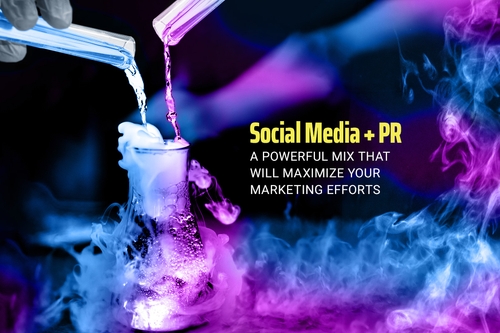It’s hard to believe that we are already approaching the halfway point of 2020. For pessimists, this year is half complete. These people may be feeling reflective of what is left behind, and relieved that we are slowly transitioning out of our quarantines. They may wish we could just fast forward to 2021 and forget about this year altogether. For the glass half full folks, there are six more months left of this year. In their minds, these months may offer feelings of hope, opportunity and maybe even a little excitement. Regardless of your outlook, we’ve all learned to be resilient. We stand up after we’ve fallen, dust ourselves off, and start again, showing we can accomplish our goals despite any adversities that come our way. As the dust starts to settle and we are getting ready to take those baby steps toward the “next normal,” we need to reassess our marketing plans for the year.
Think back to the third quarter of 2019. This may have been the time your fiscal year just started or the time when the end of your calendar year was quickly approaching, signaling it was time to gather the troops to plan for the next year. You might have been executing your plans, excited to see the results of your careful planning or just starting to gather intel to assist with next year’s tactics. In any other given year, I’d be advising all of you who have calendar plans to sit down with your teams right about now to do an assessment of that plan you’ve been executing against. I’d tell you to evaluate your strategies and budget, celebrate your successes and refocus on remaining tactics. However, this is not any given year. This is the year the pandemic changed everything.
For those of you that operate on a calendar year, this is the year to create a midyear plan. While I’m not saying you need to completely scrap your 2020 plans, you absolutely will need to adjust them. As you sit down with your marketing teams to either access the plan you put together almost nine months ago or develop the plan you will begin executing upon for the next fiscal year, here are the things you should consider within your new or adapted plan.
Your Customers
Customers should always be the first thought when developing a plan. To be a great partner, your products and services should align with the challenges your customer has. In order to strategize for the next half or full year, you need to understand the current situation your customers may be facing as a result of the pandemic, both positive and negative. If you are a business that relies on consumers to buy directly from you, make sure you understand their perception of your company or business right now. We recently published a blog on social listening that would be beneficial to read. If your main customers are within the hospitality, travel, restaurant or construction businesses, you will need to be both patient and reinventive in your offerings as these industries work to create consumer demand again. You may need to adjust your targets by promoting your products and services to those customers in industries that are thriving. Some of the questions you should be asking your customers are:
Will they alter their product and service offerings to adapt, and for how long? What positives have come about due to the pandemic? What are their current pain points or challenges? Have they had to implement layoffs? What are their capacity levels – are they producing at the same levels or speeds either due to economic changes or social distancing safety measures for their employees? Have their budgets changed?
Your Competitors
Never lose sight of what your competitors are doing, even if you need to focus on adapting your business right now. It’s important to understand how they are positioning themselves in a rebuilding or even large-growth time. Be mindful of things such as:
Have they changed their business practices? Do they have new offerings or services as a result of the pandemic? How have they adapted their key messages in their marketing materials? Are they still exhibiting at or attending the same shows? Is there a partnership opportunity to help a struggling industry or shared customer?
Your Messaging
Our country may be transitioning, but it’s still important to promote that your employees’ and customers’ safety is your number one priority. Give-back campaigns and charity programs are still vital and a softer, positive tone in all of your messaging is crucial. Although businesses are reopening, you shouldn’t have an aggressive approach with your promotional tactics. Plan to keep communicating with your customers. Provide product ideas, ask questions to understand their current challenges and help them solve problems. Create tactics to tell stories about your brand, your employees, your community causes and your vision for the future.
Your Budget
The pandemic has definitely led to a volatile economy. Unemployment is at record highs, supply chains have been disrupted, events and tradeshows are moving to virtual platforms and additional safety measures, that may be expensive to maintain, have been implemented. Some companies are experiencing devasting revenue drops while others have found themselves to have record growth. Every company is experiencing something different – they may be struggling, adapting or growing. Step one is to understand where your company is at. Once you understand your current situation, your marketing team can react and adjust accordingly. Also, like everything, consider balance. Be smart with your spending if you are struggling, but don’t make crucial cuts to your tactics that support new product launches, customer experience, online commerce or employee experience. If you are thriving, promote how your company is supporting your key partners and providing goodwill to nonprofits. Also, invest in tactics that showcase differentiation from your competitors.
Your Outlook
This pandemic changed our business and economic trends. People have become accustomed to remote working – it may even be a permanent work environment for them. Consumers have changed their shopping behaviors. Global advertising spends are nonexistent. Essential industries have emerged, such as food, medical and transportation. The key takeaway is change is constant; therefore, you need to be agile in your plan and be forward thinking. For example, if you have a plan that includes in-person events later this year, include a backup plan (or two) in case it doesn’t happen. Now is the time to show your organization that you have thoroughly thought through several scenarios and are ready to execute based on the current landscape. We’ve learned that a lot can change over the course of almost four months, and we should expect more changes before the year is over. Have backup plans for your backup plans.
If you’re wondering what type of person I am, a pessimist or an optimist, I’ll admit I’m a little of both. Perhaps this makes me a realist? I am of the opinion that we are not in a state of doom and gloom but rather, we’ve entered into a time of change. Change is hard but it also offers opportunity. Like Ferris Bueller taught us, “Life moves pretty fast. If you don’t stop and look around once in a while, you could miss it.” Life has changed for all of us due to the pandemic. If we don’t embrace a “new norm,” create a relevant marketing plan for it and move forward with tactics that support a “next norm,” we could miss out on some pretty large opportunities.
Have more questions as you put together your next marketing plan?
You can email our PR director, Tara, directly at tara@goelement.com. We’re here to help you! Before you leave, check out our most recent, super-timely #PRbriefs:
3 Questions to Ask Yourself Before Launching a Give-Back Campaign During Crisis
How to Prepare For a Successful Virtual Interview








